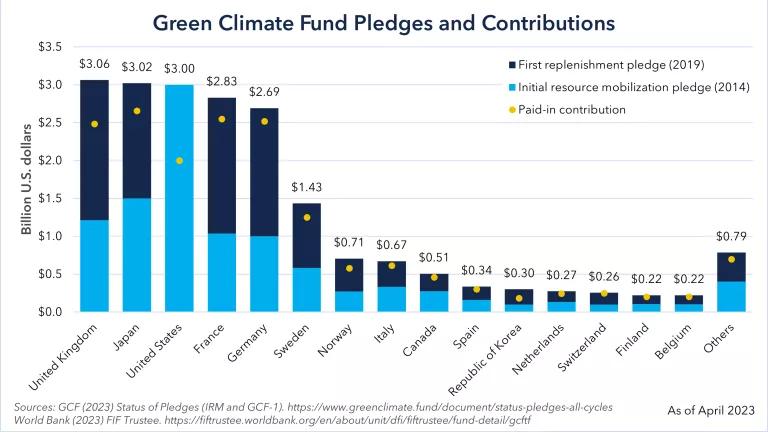Three recent publications present compelling reasons why private financing for green infrastructure is going to be a hot topic in 2013, and likely for decades to come.
1) Cities are speaking up, increasingly loudly, about their aging storm and sewer infrastructure, and the need for financing to help deal with polluted runoff problems. “Increased stormwater runoff” was the most-cited concern, with “stormwater management” coming in at a close second in a recent study released by MIT and ICLEI surveying 468 cities worldwide (a majority in the U.S.) asking about which climate-related threat most concerned them. Although federal funding for clean water infrastructure has been declining for decades, with Philadelphia’s Mayor Nutter chairing the US Conference of Mayors event later this month in Washington DC, urban stormwater management needs and green infrastructure finance in particular is likely to garner much-needed attention in our nation’s capital in 2013. (Check out this recent PBS Newshour segment highlighting how a few cities are confronting their stormwater management challenges.)
2) Continuing drumbeat of data confirming extreme weather. Yesterday, the National Oceanic and Atmospheric Administration (NOAA) released its State of the Climate Report— showing that while 2012 was the warmest on record in the United States, it also brought the second-highest number of extreme weather events in more than a century. While an average season has 11 named storms, the number of named North Atlantic storms marked the third consecutive hurricane season with 19 named storms for the region and tied with 2011, 2010, 1995, and 1887 as the third busiest year for North Atlantic tropical cyclones. NOAA’s report provides excellent factual basis for cash-strapped cities’ concerns about flooding and stormwater management.
3) Recommendations of High-Profile 2100 Commission Make it Plain. The findings of the NY State 2100 Commission (which hasn’t even officially been released yet (though NYTimes did post a draft on Monday) make a strong case for innovative financing for green infrastructure. The Commission, Chaired by Rockefeller Foundation President Judith Rodin, was formed by Gov. Andrew Cuomo in the aftermath of Hurricane Sandy and was charged with making recommendations for how New York in particular should plan for a future with increased frequency and magnitude of storms as well as population growth.
An entire chapter of the report is dedicated to the need to upgrade and expand existing infrastructure, and there is a substantial focus on “green” or “natural” infrastructure solutions. A few recommendations are worth highlighting in terms of their foresight and laudable strategic thinking in terms of how those “next generation” infrastructure projects will get financed. Specifically, the report indicates the need for an “enabling policy environment” for innovative public-private partnerships and “pay-for-performance mechanisms” to finance those infrastructure projects.
With any luck, the mounting evidence from cities, scientific authorities, and expert panels will make it increasingly hard to justify a business-as-usual approach to the financing and technological approach to managing stormwater in coming years. However, the needs of cities, weather trends, and policy recommendations are only part of the answer. Further details are needed, as well as concrete examples of cities deploying innovative strategies for green infrastructure finance.
NRDC, as part of the NatLab consortium together with its collaborators The Nature Conservancy and EKO Asset Management Partners, will be releasing a report later this month that we hope will continue to advance the case for both innovative public policy and private investment in green infrastructure. Our report seeks to provide concrete guidance as to specific strategies that cities can deploy to attract private capital to help fulfill green infrastructure needs. This report builds on our initial February 2012 report, and the updated and expanded report will be the first of its kind to address the specific economics of green infrastructure finance on private land, while also providing detailed analysis of the role that project aggregation, offsite mitigation programs, private-public partnerships, and use of vacant lands can play in stimulating much needed private investment in green infrastructure.

